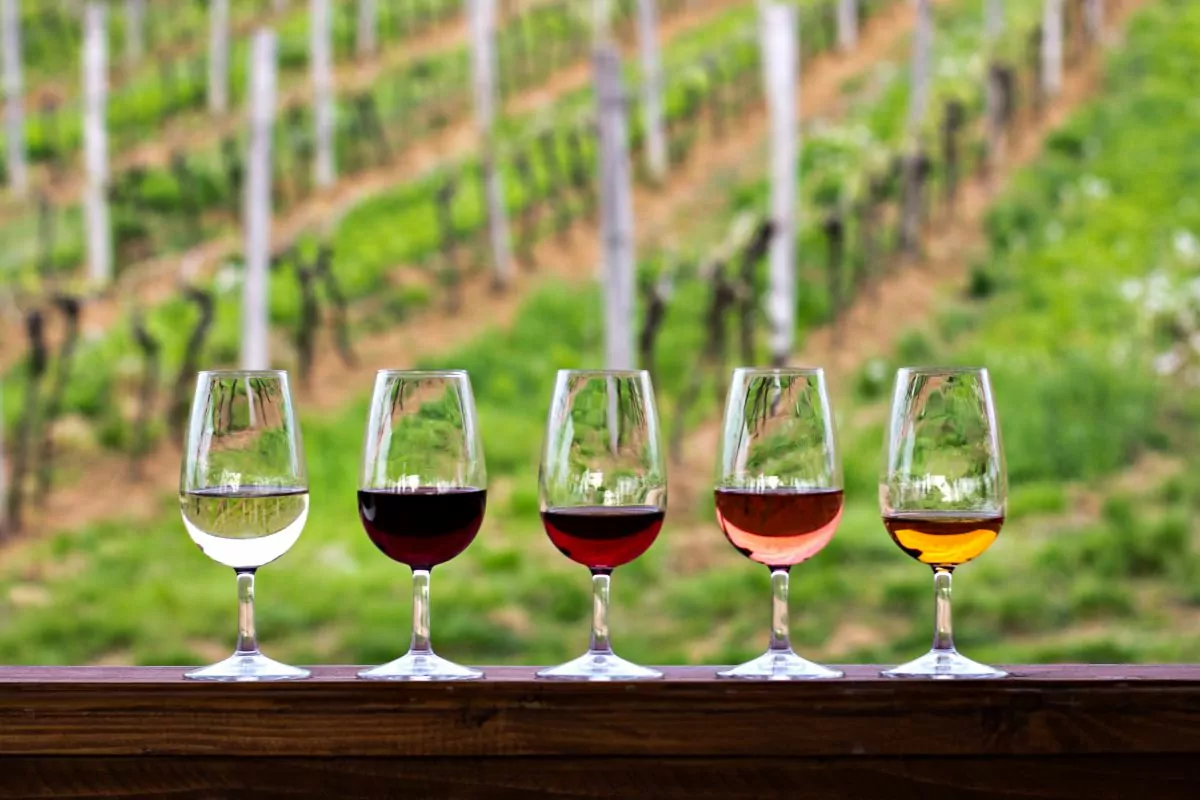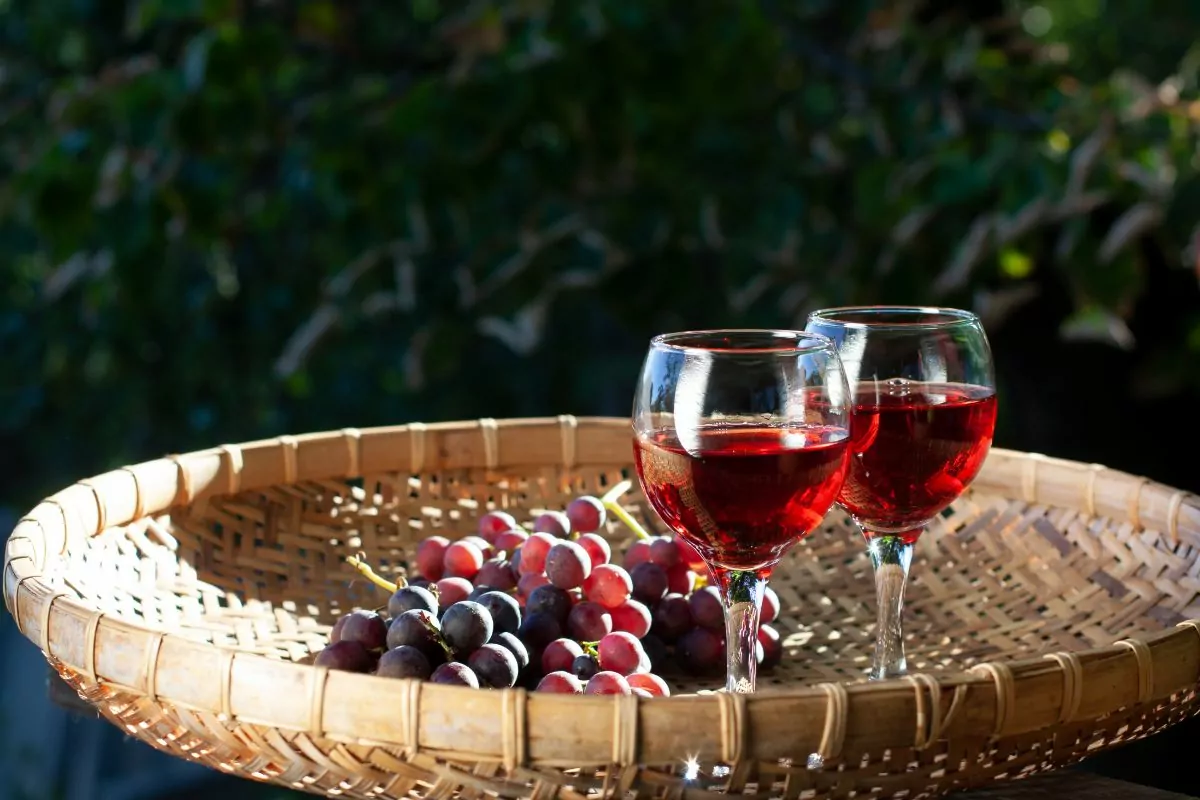Have you ever wondered why that bottle of Cabernet Sauvignon hidden in the back of your cellar seems to beckon you with a promise of unparalleled pleasure?

It’s a mystery that has captivated wine lovers for centuries. Today, we embark on a journey to uncover the secrets behind the enchanting transformation that occurs when wines age gracefully.
Picture this: a humble grape, plucked from the vine, lovingly crafted into a vibrant elixir, only to evolve into something even more extraordinary as time passes.
But what sorcery lies within those dusty bottles and elegant cellars?
Join us as we delve into the intriguing world of aged wines, unraveling the chemistry, flavors, and structural marvels that time bestows upon them.
The Science Behind Aging Wine
Let’s delve into the fascinating scientific processes that contribute to the remarkable transformation of wine with age.
Tannins And Phenolic Compounds
You see, tannins and phenolic compounds are the unsung heroes of wine aging as they possess the power to shape a wine’s character and bestow it with longevity.
As time passes, these compounds undergo complex molecular changes, softening the wine’s astringency and gradually revealing layers of rich, velvety flavors.
Oxygen
Yes, even oxygen plays a crucial role in the aging game. Controlled exposure to tiny amounts of oxygen through the porous cork or other closures allows the wine to evolve gracefully.
This gentle dance with oxygen unlocks new aromas, smooths out rough edges, and enhances the overall complexity of the wine.
Acidity, Sugar, And Alcohol
The triumvirate of acidity, sugar, and alcohol also plays a significant part in a wine’s aging potential.
Wines with balanced acidity can age gracefully by preserving freshness and vitality. Sugar levels, on the other hand, can act as a natural preservative, ensuring the wine’s stability over time.
And let’s not forget the mighty alcohol, which acts as a solvent, extracting compounds from the grape’s skins and contributing to the wine’s overall structure.
Flavor Evolution In Aged Wines
As wines age, their flavors undergo a mesmerizing metamorphosis, captivating the senses and rewarding the patient wine lover, so let’s explore the captivating evolution of flavors in aged wines!
Primary Flavors
In their youthful vigor, wines boast vibrant primary flavors bursting with fruity and floral notes. But with time, these flavors undergo a magical transformation.
Fruity aromas mellow, giving way to the emergence of secondary and tertiary flavors that add depth and complexity to the wine’s profile.
Secondary And Tertiary Flavors
Ah, the wonders of aging! Secondary flavors begin to emerge—notes of cedar, leather, tobacco, or earthiness that weave a tapestry of intrigue.
Tertiary flavors, the pièce de résistance, bring forth nuances of truffles, dried fruits, and delightful hints of nuttiness. Each sip offers a journey through time, unlocking new layers of sensory pleasure.
Bottle Aging Versus Barrel Aging
While barrel aging imparts flavors from the wood, bottle aging allows wines to harmonize and integrate those flavors.
In the sanctity of the bottle, wines undergo a graceful maturation process, achieving a delicate balance between fruit, oak, and other nuances. The result? A harmonious symphony of flavors that truly sings.
Specific Varietal Flavors
Different wine varieties showcase their unique flavor evolution with age, and, for example, a bold Cabernet Sauvignon may develop luscious black currant and cassis notes, while a delicate Riesling may unveil layers of honeyed apricot and petrol.
This makes exploring aged wines from various grape varieties feel like embarking on a thrilling gastronomic journey, where surprises abound with each sip.
Structural Changes In Aged Wines

Time to turn our attention to the remarkable structural changes that take place as time works its magic.
Tannins
As we have already mentioned, tannins often give young wines their gripping astringency, and with the passing of time, these tannins undergo a graceful transformation.
They gradually soften and integrate, becoming more supple and velvety on the palate. This metamorphosis not only enhances the wine’s texture but also allows the flavors to shine with newfound elegance.
Texture And Mouthfeel
Texture and mouthfeel also play a vital role in our sensory experience of wine, and aged wines often exhibit a silkier, more luxurious texture, coating the tongue in a symphony of sensations.
The once-taut structure of youth gives way to a harmonious interplay between fruit, acidity, and tannins, creating a velvety mouthfeel that invites us to linger and savor each sip.
Color Stability And Clarity
While it’s common to associate aging with the deepening of color, some wines may actually lose intensity and become lighter over time.
However, what they may lose in vibrancy, they gain in elegance and clarity.
The sediment that gradually forms in the bottle attests to the transformation unfolding within, a testament to the wine’s evolution and the beauty that lies in its maturity.
Balance And Freshness
Acidity, often the backbone of a wine’s structure, plays a pivotal role in its aging potential. Well-balanced acidity contributes to the wine’s longevity, helping it maintain freshness and vibrancy as the years go by.
A delicate equilibrium between acidity, pH, and other elements ensures that aged wines retain a captivating liveliness that harmonizes with their newfound complexity.
Optimal Drinking Windows For Aged Wines
As a general rule, red wines with structured tannins, such as Bordeaux or Barolo, often benefit from extended aging.
It may take a decade or more for these wines to develop their full complexity and for the tannins to soften, creating a harmonious balance.
On the other hand, some white wines, like well-aged Rieslings or white Burgundies, can also evolve beautifully with time, showcasing rich and intricate flavors.
The Beauty Of Balance: Finding The Sweet Spot
While aging allows wines to reach new heights, it’s important to find the sweet spot where all the elements align harmoniously.
For many red wines, this can mean waiting until the tannins have softened enough to allow the fruit flavors and secondary characteristics to shine.
However, it’s worth noting that not all wines are meant for long-term aging. Some lighter-bodied reds and whites are best enjoyed in their youthful exuberance, capturing the vibrancy of their primary flavors.
Uncorking The Treasure: When The Time Is Right
Determining the perfect moment to uncork an aged wine can be an art in itself as some wines have a broad drinking window, where they can be enjoyed at different stages of their evolution.
It’s often recommended to taste wines periodically to track their development and assess when they have reached their peak.
But remember, personal preferences play a significant role, and some may enjoy the energy and fruit-forward nature of younger wines, while others may revel in the complexities and nuances that emerge with extended aging.
The Bottom Line
With each sip of an aged wine, you can celebrate the beauty of time’s embrace and now that you know why it tastes better with age, fell free to stock your cellar with aged wonders, and reward your palate with the magic that lies within a well-aged bottle!
- Why Does Wine Taste Better With Age? - June 14, 2023
- What Does It Mean When A Bottle Of Wine Is Corked? - June 14, 2023
- Wine Fridge Vs Wine Cellar – Which One Should You Choose? - June 14, 2023
